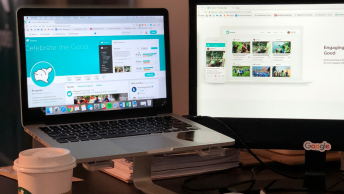Your content distribution strategy should be as unique as your brand. Find out all your options when creating your perfect strategy to make sure that your brand and content gets the attention it needs.
How to Build a Perfect Content Distribution Strategy
Before you can develop the perfect content distribution strategy, you need to answer three main questions:
Why do you want people to read your content?
It’s important to identify your content marketing goals. Do you want people to read your content to build brand awareness? Do you want your content to drive leads or increase user engagement?
Is one of your goals to have people visit your site even if they’re not making purchases every day? Or are you looking to build a relationship with them through your newsletters?
Who is your audience?

Who are you trying to reach? Are you more interested in talking to your current customers or prospective customers? What is your age demographic? Are you talking to millennials who will grow into your brand or senior-level executives who can make purchasing decisions for their organizations?
How does your audience consume content?
You need to be able to go where your audience is and speak to them in a language they can understand. This means you’ll need to identify how and where they engage with content, and then incorporate that information into your strategy.
If you’re looking to connect with senior executives, you’re not going to do that through Facebook. Mold to their needs and try a targeted email campaign.
Once you’ve been able to answer these questions, you’ll be ready to develop your perfect content distribution strategy. You’ll also be prepared to decide what kind of strategy you want to work with, paid or organic.
Paid Distribution
Paid distribution works best for brands looking to attract reliable sources to their content.
A paid content distribution strategy works best when:
- You’re launching a new campaign and are looking to build awareness and critical mass around it.
- You’ll be introducing a new product, event, or service.
- You’re wanting to boost the views of high performing content.
You’ll have to remember that paid promotion results aren’t sustainable unless you continue to keep paying for them. This is why a paid content distribution strategy can be beneficial and should be used strategically.
That being said, an advantage of paid content is the ability to measure the results of your paid content distribution strategy, and you’ll be able to easily estimate the traffic you will be receiving.
This is not something you can do with the audience of an organic strategy.
Ad Networks (PPC Advertising)
If you decide to use search PPC, your brand will be paying for keywords to show up as sponsored results when people search for them. The most well-known PPC network is Google AdWords, although there are others like Bing and Yahoo! search ads.

The other option is content PPC. This type uses content discovery networks to get noticed. They advertise articles and videos on websites through widgets. Outbrain and Taboola are some of the bigger content PPC networks.
Ad Network Tips:
- Invest in strong copy. Think about what your users will be searching for and purchase those terms. Use active language and Calls to Action. This will help you to stand out.
- Promote high-quality content with clear steps. Once you reach new people, you need to find a way to build a relationship with them. High-quality content will help your brand stand out and get more users to take action by signing up for your newsletter.
Paid Social Media
A social media content distribution strategy will only reach specific segments of users. Additionally, social media advertising varies between platforms, and your success can depend on how you allocate your budget.
Your paid social media budget should consider these points:
- Are you generating awareness around a new service or product? Or are you trying to improve lead generation?
- Do you want to spread spending over your entire campaign or are you looking for a quick win?
- Which networks does your audience spend most of their time on?
Facebook is one of the largest social platforms that allows you to engage with your target audience. Facebook’s paid features allow you to create and personalize your ads with your brand goals.
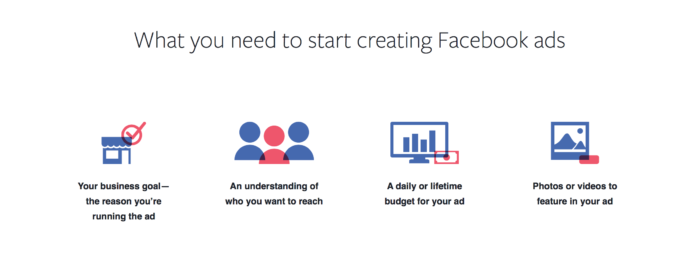
Facebook allows its audiences to be segmented based on demographics, network, interest, and behavior. Ads run on the right-hand column on a desktop, and in the News Feed on mobile devices.
Twitter is a real-time social network that reaches 320 million monthly active users.

These ads can be used to achieve:
- increased followers
- more engagement
- increased website traffic
- more website conversions
- encourage app installation and re-engagement
Twitter allows you to target ads based on demographics, interests, keywords, and behavior.
This social network has over 300 million daily users and is a visually focused network. Consequently, if you want to run an ad on Instagram it needs to be striking with its photos or video.
Instagram is owned by Facebook, so to use it you’ll need a Facebook page and a Facebook ad account.
Once this is done, then you can select the type of ad you want to run. When you do this, evaluate your goals for your ad by:
- Page post engagement
- Video views
- Clicks to website
- Mass awareness
- Mobile app engagement
- Reach and frequency
- Website conversions
- Mobile app installs
Instagram offers the same targeting options as it’s parent company Facebook, but it does offer four different formats for its ads: photo, video, carousel, and stories.
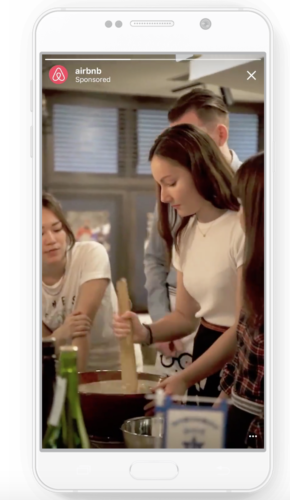
Tips for all social media advertising
- Text and visuals matter. Use visually completing images and write attention-grabbing text.
- Optimize your campaign while it’s running. Check the analytics of your campaign during its length and optimize it to get the best performance.
- Use paid social media to generate leads. Have a plan in place to start a relationship with the new users you get.
Organic Distribution
The biggest perk of organic distribution is that it is free. That’s right, free. It refers to the channels you can use to build and engage your audience that doesn’t cost anything extra.
The most popular organic content distribution strategies include email, social media, YouTube, and Search Engine Optimization (SEO).
To build your own email database, simply capture visitor information when they’re joining your newsletter, downloading an eBook, or accessing gated content.
Structure this form to request specific information about job roles, industry, and budget. This will give you a deeper insight into your audience to send out tailored content that is specific to their needs.
Google Analytics can help you to make sure that your email campaign is working.
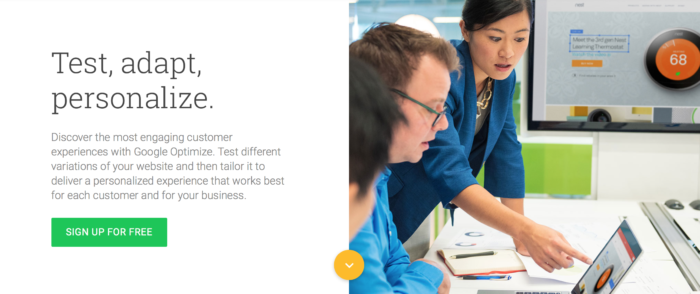
Quick Tips
- Optimise your forms to request only information that is relevant and beneficial to you.
- Tailor your content to take a personal approach with each interaction to create feelings of trust and credibility.
- Try out different pop-up forms on your site to determine what will entice your visitors more.
SEE ALSO: How to Use Google Analytics to Track Email Campaigns
Social Media

Regularly sharing updates and posting new content can keep you fresh in your follower’s minds even if they’re not ready to purchase a product or invest in a service.
Your activity can be advantageous because it gets you involved in conversations that allow you to connect with customers and offer helpful content. It can also give you a good idea of how your brand is perceived.
Quick Tips
- Prioritize your video content
- Use appealing videos and persuasive text
- Optimize your posting time for when your target audience is the most active
- Be social. Ask questions, address queries and participate in the general chatter
SEE ALSO: How to Create a Social Content Strategy for Your Brand
YouTube
YouTube is the second largest search engine. It makes sense that it would be a great site to build your brand on.
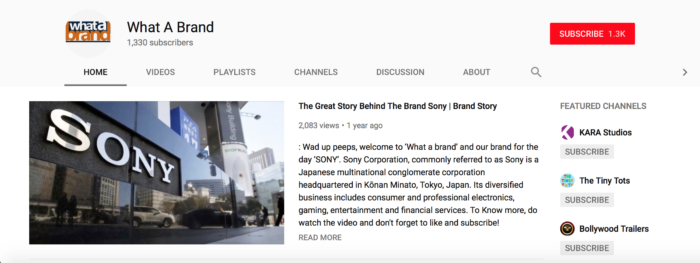
Your goal when using YouTube should be to gain a lot of attention and drive that audience back to your website.
Quick Tips
- Demonstrate your expertise to show your knowledge in your field
- Create content that entertains while it informs
- Use keyword-rich descriptions to make your video searchable
Search Engine Optimization
SEO lets you pick keywords from your content to help it rank higher in search engines. A targeted keyword strategy will help search engines determine what your content is about and how relevant it is to users.
Quick Tips
- Find the predominant search terms for your business
- Focus each piece on a relevant keyword to make it easier for search engines to determine what your content is about
- Use longer, more detailed and informative content to rank higher
Final Thoughts
Building your perfect content distribution strategy is a unique process. You will have to determine whether you want to have paid or organic reach, and this will depend strictly on what kind of audience you are looking to have.
These quick tips will make sure that whichever strategy you choose for your brand will be well thought out and successful.
What’s your content distribution strategy?



